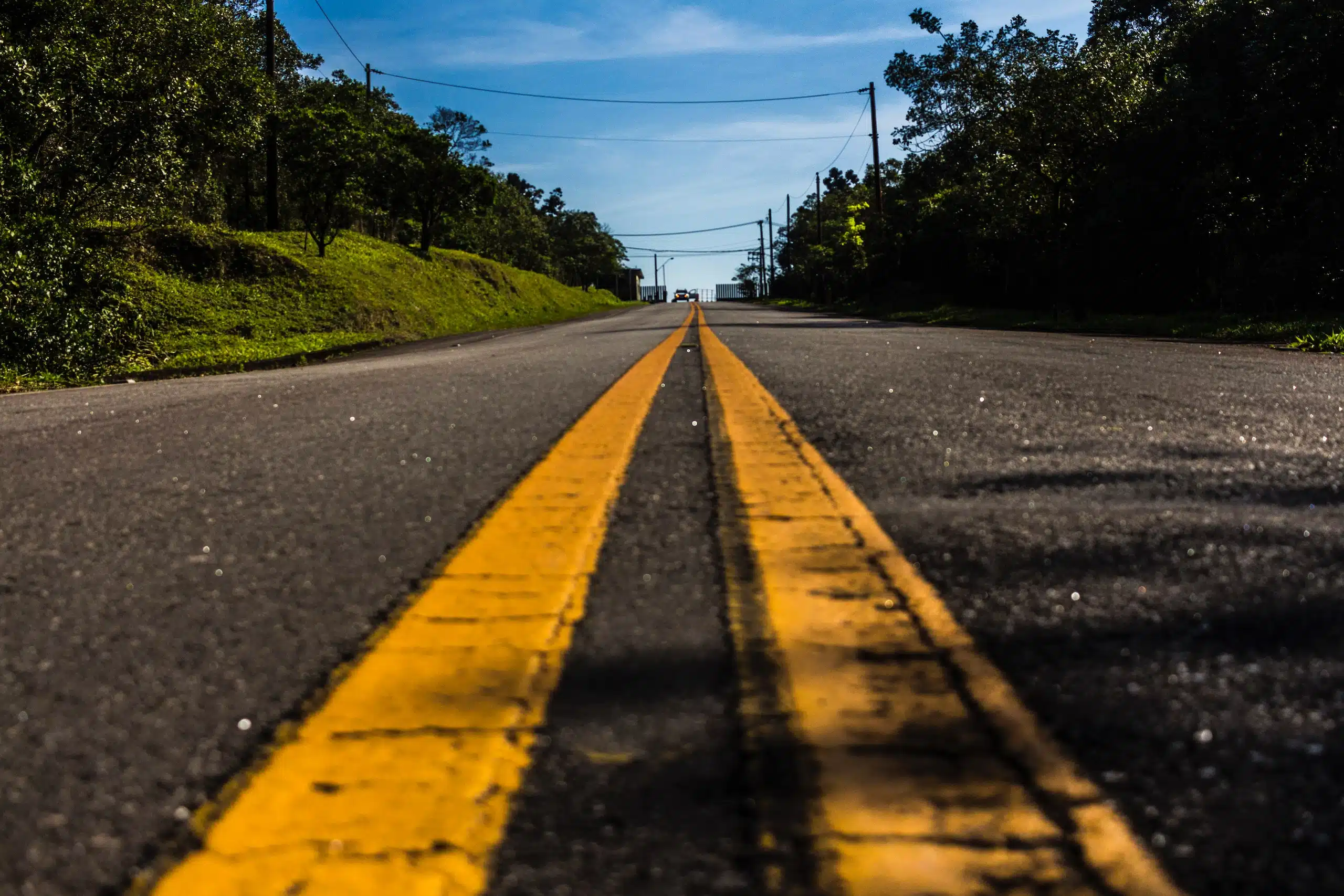Home » Blog » Car » Car Lifestyle » Road Rules You Might Not Know About
Categories
Tags
animal welfare
breed profile
buying a car
buying a pet
Car
car accessories
car care
car features
car insurance
Car safety
car sales
car service
cat
cat behaviour
cat body language
Cat Breeds
cat food
cat insurance
comprehensive car insurance
Dog
Dog Behaviour
dog body language
Dog Breeds
dog food
Dog Insurance
dog training
eco friendly cars
Kitten
New Car
pet accessories
pet activities
Pet Adoption
pet breeders
pet days of the year
pet fun stuff
Pet Health
pet insurance
pet parenting
Pet Safety
pet services
Puppy
rescue pets
road safety
road trip
safe driving
Recent Blog:
Facebook Posts
13 hours ago
Are intestinal worms setting up camp in your dog’s gut without paying rent? Here’s how to spot the main culprits and get rid of them too:![]()
![]() Preventing, Identifying and Treating Intestinal Worms in Dogs - bit.ly/43YjCKu
... See MoreSee Less
Preventing, Identifying and Treating Intestinal Worms in Dogs - bit.ly/43YjCKu
... See MoreSee Less
Preventing, Identifying and Treating Intestinal Worms in Dogs
www.pd.com.au
Intestinal worms, such as roundworms in dogs are one of the least glamorous topics on the planet. These intestinal parasites that basically use our dogs
PD Insurance
with Dogs West.
2 days ago
We enjoyed meeting #breeders #doglovers and members at the Dogs West Open Day. Special thanks to our partner Dogs West for organising an incredible event. There is still time to enter our pawsome competition. Click here for details: bit.ly/4covyce![]() #PDinsurance #dogswestopenday #dogswest
... See MoreSee Less
#PDinsurance #dogswestopenday #dogswest
... See MoreSee Less
3 days ago
Did you know? The Manx is a breed that is known for its lack of a tail, which is caused by a genetic mutation.
... See MoreSee Less
Some Australian road rules apply across the country while others apply only to one particular state or territory. Regardless, we can assume that these road rules are in every driver’s DNA because they’ve managed to get their licence, right? Riiight? Not necessarily. If this applies to you, let’s get you back on track on those and go over road rules for cyclists too.
It’s alright if Australia’s lesser-used road rules might’ve dropped off your radar. We’ve got a quick recap of some of our stranger and lesser-known road rules.
We’ve also answered commonly asked questions Aussies have about road rules, including cyclist road rules, why road rules exist, do road rules apply in car parks, etc. So rev your engine (the safe way) and let’s head south…
Table of contents
NSW road rules you may not know about…
It’s not that NSW is the leader of the pack or anything like that. We’re just starting here because NSW happens to have more quirky road rules than anywhere else in Australia.
You know about the five-second rule, right? You drop your biscuit on the floor and it’s goners, dirty, no longer safe to touch. Unless you pick it up before five seconds has passed, in which case you can still enjoy eating it.
Well, in NSW you get the three-metre rule.

The 3m rule
In NSW, regulation 213 stipulates that a driver is guilty of an offence of not making a motor vehicle secure if they fail to secure the windows or fail to lock the doors of the vehicle before leaving the vehicle while they are at least three metres away from the closest part of the vehicle.
So, if you move three metres or more away from your car, you’re legally obliged to lock it. Doesn’t matter if you’re on the opposite pavement eating a bagel or if it’s just in your driveway. Lock it.
You really can be fined if you don’t.
The mud splashing rule
In NSW, it turns out that it was an offence for a driver to splash a bus passenger with mud after driving through a puddle and one that could cost you up to $2,200. However, road rule 291-3 has now been repealed and is no longer in force in NSW. Does that mean us bus passengers need to be super vigilant now?!
Still, does anybody actually do this? This should really be common sense. Who splashes people waiting for the bus with a muddy puddle? Not even Peppa Pig would have the gall.
Unfortunately, the splashing a bus passenger with mud law left people wide open to being splashed with water. Just not mud. It also doesn’t cover pedestrians. Or people in taxi lines, or… etc. etc.
So next time you’re walking your dog in NSW – keep on the far side of those muddy puddles. And remember to pack your DIY dog walking kit.
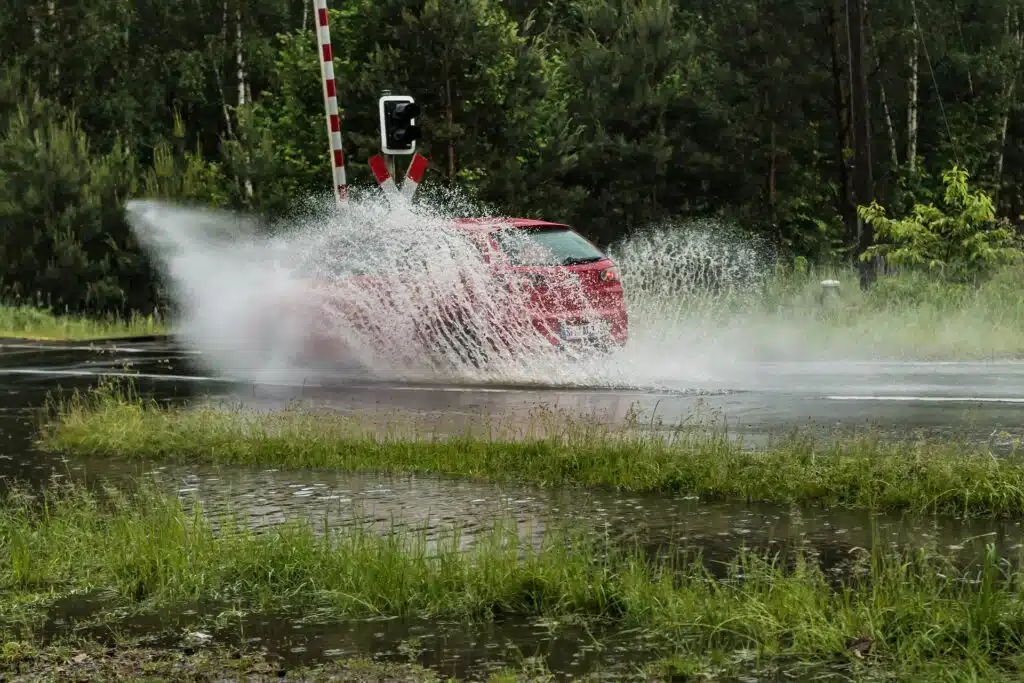
Quirky QLD road rule
When driving in Queensland you must always be ready to apply the horse rule 🐎. Seriously, we’re not horsing about. If you come across a ‘restive’ horse, stop your car on the left side of the road. Don’t start your engine or move your car until you’re sure you won’t aggravate the horse.
‘Restive’ you ask?
According to the Cambridge dictionary, restive means restless or anxious and worried. We feel you, equestrian padre, we really do.
If you’d like to read this road rule straight from the horse’s mouth, check out the bottom of the Queensland Road Rules page.
WA no potato rule
Our favourite quirky rule is all about potatoes. Yep, potatoes. Carrying too many potatoes in your car was illegal in Australia as recently as 2021. If you’re planning on throwing a Sponge Bob party with a big ole’ pile of French fries 🍟, listen up.
According to section 22A of the Marketing of Potatoes Act, it was illegal to carry over 50kg of potatoes in your vehicle. That is, unless you’re a member of the potato corporation. If an officer suspected you were up to this carbohydrate crime, they could pull you over and inspect your vehicle.
If you already felt bad about eating lots of chippies or hash browns, perhaps that’ll help you give those up. Maybe just one or two boiled potatoes… at most. Kidding.
It’s worth noting the Act applied to all states and Territories of Australia although it was gradually repealed.

Everyone note: Don’t stick your hand out of a car!
You could get into major trouble for resting your arm on the ledge of your car window. No, we’re not kidding. In NSW you could get slammed with a $349 on-the-spot fine, plus three demerit points. For passengers who break this law, the penalties are the same.
There’s only one exception: if the driver is signalling to turn right or slow down and stop.
NSW isn’t the only place you need to be aware of keeping your extremities to yourself. Basically, all states and territories have laws that prohibit drivers from having any part of their body outside a moving car, which could get them into trouble.
FAQs
It’s clear Aussies want to learn more about driving rules if you look at the numerous Google searches every month. Some questions seem obvious, but you might realise you don’t know everything about the topic.
Get a sense of what Aussie riders are worrying about by reading the most asked questions each month below:
Why do road rules exist?
While this may seem like a no-brainer, with all the road rage erupting on Aussie roads and wreaking havoc, let’s take a look at why Australian road rules actually exist by driving (safely) into these tragic facts…

Here are some shocking 2023 stats:
- According to authorities, the number of people killed on South Australian roads in the almost-three months to late March was more than double that of the same period last year. At that point, 37 people had died on the state’s roads this year, compared to 16 for the same time period last year.
- According to Bureau of Infrastructure and Transport Research Economics (BITRE) data, in the 12 months to February this year:
– Australian Capital Territory road deaths were up 54.5% on the previous corresponding period
– Tasmania road deaths were up 36.8%
– Western Australia road deaths were up 19.3%
– Road pedestrian deaths were up 23.4%
According to BITRE, the number of motorists killed on Australian roads reached a five-year high in 2022
These stats are with Australian road rules in place. Can you imagine what it would be like if our roads were lawless?
Think about it (prepare yourself for movie references now), it’ll be like The Purge if drivers forgot all about adhering to road rules; it’d be a free-for-all on the road (think Mad Max on steroids). Basically everybody thinks differently, so chaos reigns where there’s no structure – there’d be a ton of damage to people and property. It’s a given that Aussies need road rules.
What are the road rules for cyclists? 🚴♂️
Australian cyclists have to follow the same standard national road rules as drivers: stop at stop signs, only turn where you’re allowed, don’t ride up one-way streets, etc. (Side note: when it comes to bike lanes, you’ll find more info in our article: What You Need to Know About Riding in a Bike Lane.)
The majority of these laws are common sense—stay visible, ride the right way, be safe—and keeps cyclists and drivers protected. Besides these standard laws, every state has its own cycling laws and, interestingly enough, not every state feels the same way about bike helmets and riding on footpaths…
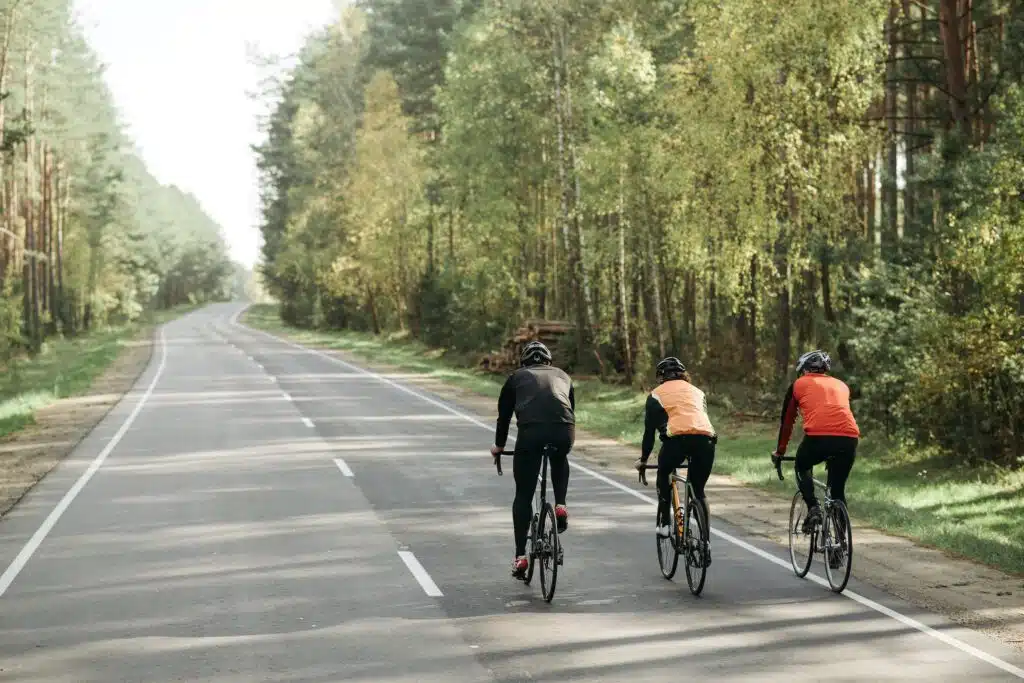
You’ll find some differences (as well as similarities), depending on the state you live in, below:
New South Wales
The NSW legislation website states that bicycles are considered vehicles and have the same road rules as other vehicles. Bike riders are also expected to follow special NSW road rules. Here are some of the special rules as advised by the NSW Centre for Road Safety:
- Bicycle riders may perform hook turns at intersections unless prohibited by sign posting.
- Bicycle riders do not need to give a left or stop signal, or signal when making a hook turn.
- Bicycle riders may travel in a Bus Lane, Tram Lane, Transit Lane or Truck Lane but not in a Bus Only Lane.
- Bicycle riders may ride two abreast but not more than 1.5 metres apart.
- Bicycle riders may overtake on the left of stopped and slow moving vehicles.
For more info on special NSW road rules, click here.
Victoria
As a bike-friendly city, Melbourne has a ton of bike paths, and plenty of laws intended to protect cyclists and make roads and footpaths safer. Here are the rules for all bicycle riders in Victoria, not just Melbournians…
- You need to wear a helmet at all times, unless you’re medically or religiously exempt.
- You can’t ride a bike on a footpath.
- Using a phone while riding isn’t allowed.
VIC also has some pretty tough fines in place. For more information on the fines in question, click here.
Queensland
Last updated in 2022, the following penalties apply to bicycle riders, according to the Queensland Government:
- Failing to stop at a ‘stop’ sign at an intersection.
- Using a mobile phone illegally.
- Exceeding the speed limit in a speed zone by less than 13km/h
- Failing to stop at a red traffic light.
- Disobeying a ‘no U-turn’ sign at an intersection.
Find more info on Queensland bicycle road rules and safety here.
South Australia
Road users here, including bicycle riders, are governed by the South Australian Road Traffic Act as well as the Australian Road Rules. Some road rules for cyclists include:
- Bicycle helmets must be properly adjusted and securely fastened when riding.
- Don’t ride into the path of a pedestrian or driver so you don’t cause a traffic hazard.
- You must not ride on a length of road or path to which a Road Access sign or a No Bicycles sign applies.
- When riding, you must face forward and be in a seat designed for travelling on a bicycle.
More info on bicycle rider road rules lives here.
Western Australia
In line with their push to make Perth a more bike-friendly city, Western Australia’s road rules for cyclists are quite straightforward. Some of their rules for bicycle riders include:
- Bikes are not allowed on buses.
- Bikes are not allowed on trains to Perth between 7am-9am.
- Bikes are not allowed on trains from Perth between 4.30pm-6.30pm.
- Cyclists are allowed to ride on the footpath unless otherwise stated.
- Cyclists must use bike lanes where marked.
Read more info on offences and penalties here.
Australian Capital Territory
Canberra’s road rules for cyclists are a mix of all the other states’.
Some of their road rules for cyclists include:
- Ride predictably and indicate to motorists before changing direction or turning.
- Keep your brakes and tyres in good working order.
- Install a bell for safety.
- Anticipate driver’s actions.
- Obey the road rules, such as stopping at all red traffic lights.
- Wear a helmet and brightly coloured clothing.
- Use lights when cycling at night.
Click here for more cyclist road safety info.
Tasmania
A bit more laid back than other states, Tasmania’s bike laws are all about keeping riders safe. Road laws for cyclists in Tasmania follow the Road Rules 2019 (Tas). Here are some of the rules:
- Bicycle riders mustn’t carry more persons on the bicycle than the bicycle is designed to carry.
- A rider is not permitted to ride within 2 metres of the rear of a moving motor vehicle continuously for more than 200 metres.
- A rider is permitted to overtake a motor vehicle on the left except where that vehicle is turning left or indicating it will be turning left.
More information on Tasmanian bicycle and cyclist laws lives here.
Northern Territory
The Northern Territory has some of the most relaxed bike laws around. Many believe that this attitude encourages more people to take up cycling. Here are some of NT’s road rules:
- Cyclists under 17 years of age must wear a helmet at all times.
- Cyclists over 17 need to wear a helmet when riding on the roads, they’re not required on footpaths.
- Cyclists must always use the on-road bike lanes where they’re available.
For extra info on bicycle safety visit this website.
Do road rules apply in car parks?
Yes, Australian road rules do apply in car parks.
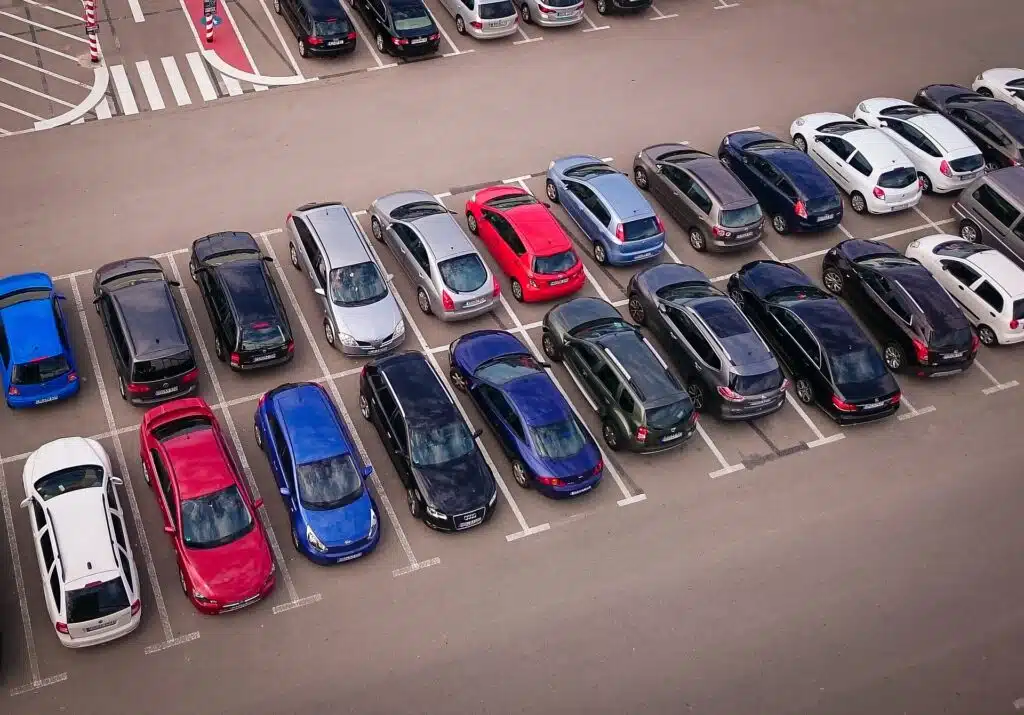
Here are some important rules or should-be-rules:
- Only park in designated spots in which you and your vehicle are eligible for. Leave accessible parking and seniors parking to others unless that’s you
- Be patient if someone is reversing out of a spot. Give them enough room so they can get out safely (it’s common courtesy).
- Walk your shopping trolley back to the bay. It’s the decent and more thoughtful thing to do. Do you know about the shopping trolley ‘theory’? Basically, it’s a viral Twitter tweet about how what you do with your shopping trolley will determine how good or bad you are.
- Make sure you’re driving carefully, anticipating other people’s actions, and respecting pedestrians and drivers alike.
- When you see a spot become available, put your indicator on to show your intent to take it.
Do road rules apply on private property?
According to Ryan & Seton Lawyers, most Australian road rules (e.g. seat belts, speeding) don’t apply when you’re driving on private land. However, you still have to follow the drink driving laws and motor vehicle accident laws when you’re driving on private property.
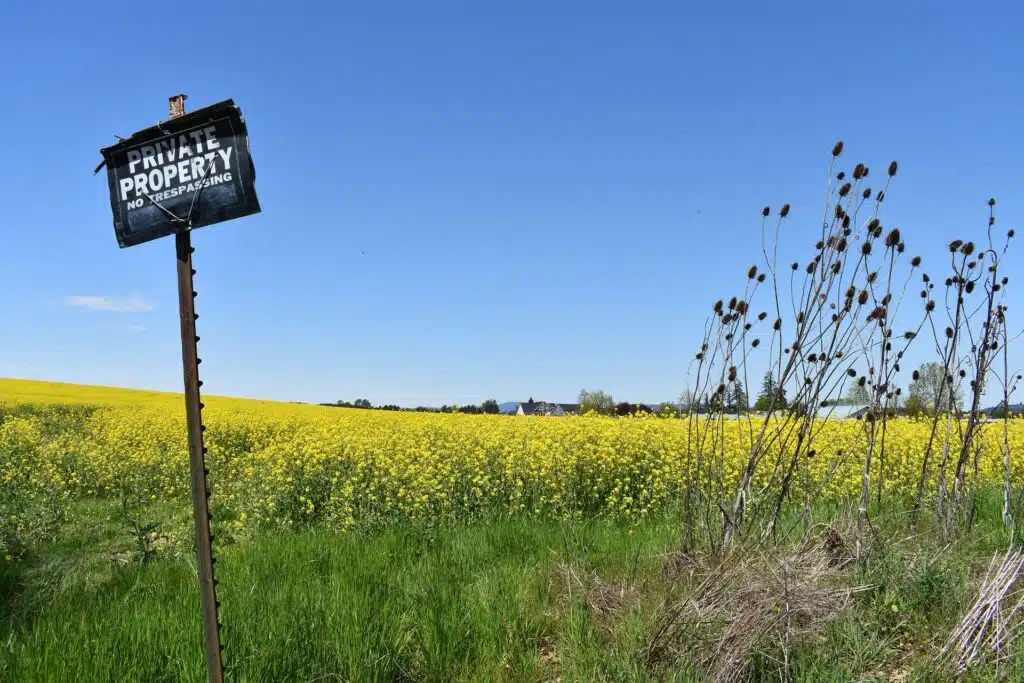
Check out these other awesome car-related blogs (we know you’ll be interested in them) below:
- Which Australian State Has the Worst Drivers?
- Why Is My Car Insurance Going Up?
- Top Tips for Protecting Your Car from Winter Weather
- 10 Crazy Car Inventions That Failed
- Driving a Bigger Car: How to Prepare Yourself
Play by the road rules
If you already thought of yourself as a law-abiding citizen for Australian road rules, it may be time to make some notes in your diary. While you’re at it – does your car have insurance?
If you get into a fix and your car is damaged, or you drive into and damage someone else’s, car insurance could be a bank-saver. Comprehensive car insurance not only covers damage you do to your own car, it gives you legal liability cover for damage you do to others’ cars and property. In addition, with PD Insurance there are many added benefits and optional extras.
It’s super easy to get an online quote from us right now – just click below.
Share On:

